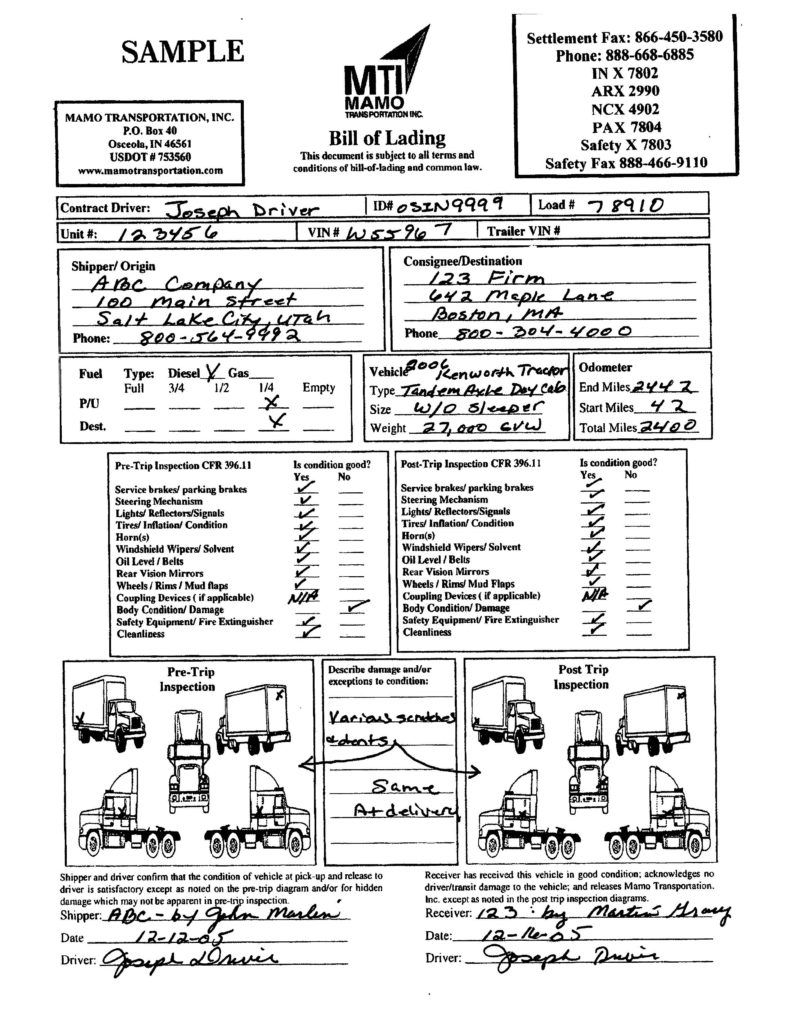An incorrectly completed bill of lading can be a very expensive mistake BECAUSE the bill of lading is not just a receipt for the vehicle from the shipper to you, and from you to the consignee, but it is the CONTRACT OF HAUL.
Because it is a legal document, all of the fields MUST BE completed: especially critical are
- Complete shipper and consignee name and address and phone number
- Identification of fuel type and amount of fuel – both at pick-up and delivery
- Completed diagrams for both the pre-trip and post-trip inspection: describe the exceptions you have taken to condition on the lines provided, and use arrows to clarify when these issues were identified, at pick-up and/or delivery
- Completed odometer readings: three numbers must appear: start reading, end reading, and total miles driven
- Vehicle description: in addition to the vehicle VIN number which you show at the top of the bill of lading, you must give make, year, model, and GVWR of the vehicle. [ GVWR appears on a metal plate in the door frame: it is the weight of the vehicle plus full fuel tanks, estimated driver weight, and weight of the cargo for which the vehicle was designed.]
- Completed header: your name and ID number, load number, unit number, and VIN must all appear in the header.’
Because it is the contract of haul, it is the document that authorizes you to transport a vehicle that you do not own on interstate highways. Police investigating a collision or moving violation, USDOT officers performing a roadside inspection, towing and repair vendors will all need the information which appears on this document.
Please respect it; complete it. Never begin a trip without a bill of lading, and never accept or surrender a vehicle without a customer signature acknowledging transfer of the vehicle and its condition, odometer reading, fuel level, etc.

